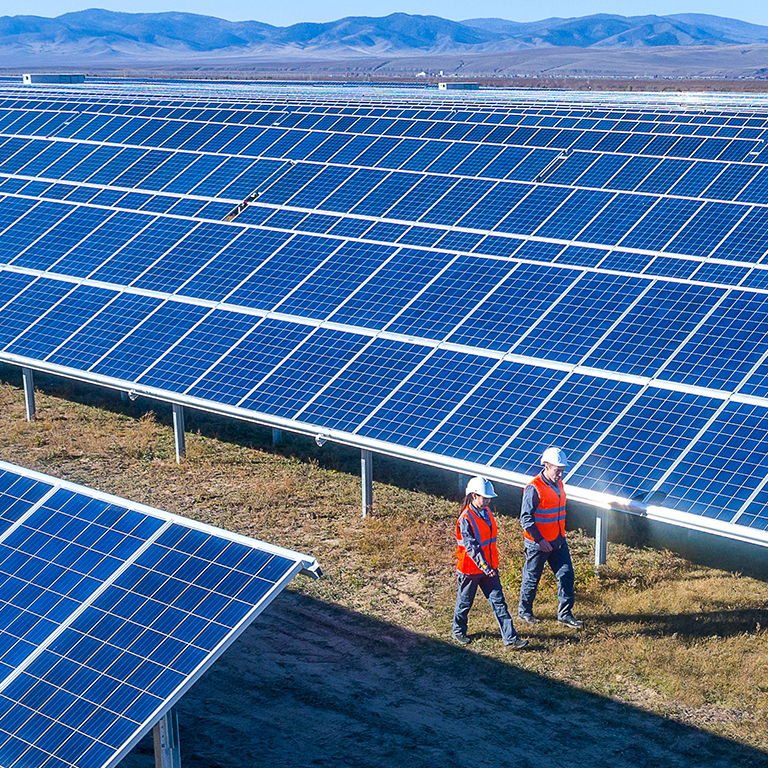Upstream Energy
Insurance market capacity remained plentiful over the quarter for large premium accounts with good loss records. Competition between insurers was strong, and these types of accounts typically experienced renewal price increases between 2.5% and 5%, with some insurers offering flat or meaningful reductions as they sought to maintain or grow market share on large premium accounts. However, there was a demonstrable change in market interest for smaller premium accounts and those with poor loss histories. In this tranche of the portfolio - including fracking spreads, saltwater disposal operations, and geothermal — price increases ranged from 7.5% to 15% year on year.
Market capacity reduced for operations in the offshore US Gulf of Mexico for named windstorm coverage, and remaining insurers were increasingly selective. Despite a good 10-year loss record, insurers have been apprehensive about the volatility of windstorm activity, and have shifted capacity towards onshore classes to balance their portfolio for long-term capital stability. Policy terms from lead markets remained acceptable for insureds with excellent loss records and long-term relationships; however, completing placements with consensus from following markets remained challenging.
The sinking of a USD135 million jack-up rig off the coast of Malaysia in May was the most significant loss incident during the quarter, and is an example of the difficulty the offshore drilling contractor sector is causing upstream underwriters. For two consecutive years, losses have completely exhausted premiums for the rig sub sector within the first six months of the year.
Downstream Energy
Rate increases continued to decelerate over the quarter, and price increases averaged 10%, down from 15% to 20% at the beginning of the period. This represents a significant shift compared to the same time last year, when rates were rising upwards of 30%. Some insurers are now offering two-year term agreements at flat premiums, indicating rates may be topping out.
Consistent rate increases and restrictive terms over the last three years have seen insureds drift towards greater self-insurance and use of captives, and OIL, the Bermuda based energy mutual. This drain of premium from the commercial market has impacted insurer revenues. There was a marginal, but significant, oversupply of capacity building through the quarter as insurers pursued premium income and looked to fulfil increased budget quotas for 2021. This means that insureds now have greater opportunity on both premium and policy terms, and major placements generally can be completed without involving all lead markets. However, the market remains sensitive and significant loss activity resulting in negative underwriting results for 2021 could cause capacity to contract and push rates upwards.
As the market dynamics have shifted, insureds and their brokers have looked to push back on insurers that have proven to be expensive, or inconsistent on policy terms compared to other insurers. As the market cycle continues to change over the next six months, insureds may be in a stronger position to negotiate on more restrictive terms and conditions established during the recent challenging market. That said, business interruption volatility clauses will remain a focus for insurers as oil prices recover, production ramps up, and consumer demand increases. While communicable disease clauses have been established in most regions, cyber resultant damage clauses continue to be topical as the risk evolves. A recent cyber-attack on a pipeline operator in the US refocused attention on the potential for damage and disruption from cyber threats. While the attack caused no physical damage, it did create supply disruption and raised questions about the security of energy supplies.
Power
Traditional
At the start of the quarter, insurance markets showed signs of decelerating rate increases, to below 10%, on average, particularly for straightforward renewals with a clean loss record and no natural catastrophe (NatCat) exposures. However, a number of large losses caused affected underwriters to change their approach, and rate increases averaged 20%. This could have been an immediate market reaction; more accurate loss reserve calculations during the next quarter should provide a clearer picture about rate trends.
Insurers now are focusing on the tightening of terms and conditions as rates stabilize due to the increasing capacity from emerging managing general agents (MGA), particularly where over-placement and signing issues on sought after accounts may become prevalent.
As environmental, social, and governance (ESG) principles and practices continue to gain traction, accounts that include coal experienced increases of up to 40%. For clients in this sector, the restructuring of programs, and use of global markets to secure placement is now commonplace.
Renewable energy
Capacity for renewable energy projects continues to increase as new markets enter the sector to diversify their existing conventional power or offshore energy portfolio and existing insurers compete to grow market share. Solar and wind projects dominate the sector, and capacity has contracted for alternative sources such as biomass, biofuels, and hydro plants. This has created both placement and pricing challenges from the general property and conventional power markets that continue to underwrite these classes.
Rates and deductibles continue to increase, following a trend established in 2020. Markets are focused on tightening terms and conditions, particularly for construction and NatCat risks where loss experience has historically been poor. The placement process has been significantly more challenging for construction risks related to wind, both offshore and onshore, as markets continue to be impacted by the long-tail nature of previous losses. As turbine sizes increase and developers expand into isolated locations, insurers are likely to take a conservative approach to unquantified risks. This will put pressure on pricing and retentions, and necessitate longer lead times for program placement.
Concerns earlier this year about potential defects in cable protection systems for offshore projects have prompted some markets to introduce additional exclusions. For onshore construction, exclusions remain in relation to specific contractors that have experienced frequent losses in recent years.
Terrorism/political violence
New entrants and increased capacity from active markets have corrected the capacity shortfall that existed during 2020. However, the market for political violence perils — in particular strikes, riots, and civil commotion (SRCC) — hardened in recent months due to ongoing social unrest in the US, Latin America, and Hong Kong. Unsurprisingly, some “all risks” markets now restrict or remove SRCC cover from their policies, particularly for occupancy types more vulnerable to losses, such as retail outlets.
Analysis of worldwide terrorism events has shown a shift from the use of traditional tactics and weapons towards “lone wolf” attacks and the use of bladed weapons and vehicles. Demand for coverages catering to this type of loss scenario is on the rise and markets have responded accordingly, evolving terrorism products to incorporate cover for active shooter and malicious act incidents.
Energy casualty
While the pricing fluctuations of 2020 appear to have stabilized, rates during the quarter continued to trend upwards, but at a more controlled pace. In 2020, the London and European markets contracted by up to USD200 million as syndicates withdrew and other insurers reduced their offerings. There are promising signs that the challenging market conditions may ease as capacity returns during 2021, though mainstream carriers are yet to re-enter the market.
Given the current conditions, markets continue to iterate existing exclusions and introduce restrictive terms. The previously worded corona virus exclusion has been replaced by a wider-reaching communicable diseases exclusion. The markets’ handling of malicious and non-malicious cyber risk is inconsistent, with individual insurers introducing variant clauses. These variations are leading to discrepancies across different regions and types of losses. One such variant has prompted the Joint Liability Committee to issue an accompanying data exclusion clause to clarify that claims from data loss (without accompanying physical damage or bodily injury) are not covered, with special exclusionary language for mental anguish caused by loss of personal data.
Markets’ attention is now turning to climate change and the heightened focus on ESG principles. London markets have started to consider climate change exclusions on policies, similar to the exclusions first introduced almost a year ago by OCIL in Bermuda. The OCIL exclusion is wide-reaching and creates a new policy definition for “greenhouse gases;” the London markets are seeking to adopt a different definition. The London approach is currently around a climate change litigation exclusion. This orientation may suggest that insurers believe climate change is excluded already, and they are now seeking to exclude legal fees and expenses from defending against climate change related court cases.
Bermuda casualty
Recent placement experience for renewal accounts suggests that the Bermuda market is starting to stabilize following the downscaling of capacity in 2020. While rates are still rising, a number of new insurers are showing conservative interest in energy accounts. As with the global casualty landscape, the Bermuda markets are looking to impose more restrictive coverages for cyber and communicable disease exposures. It is not unreasonable to expect that they will look to follow the global market position on climate change and ESG exclusions.
Marine Exposures
The marine insurance market is currently stable in terms of rates and capacity, and markets are underwriting with confidence. Most hull insurers have strong growth plans for 2021-22, buoyed by signs of increased trade and marine activity as world economies recover following the COVID-19 pandemic. Commercially priced capacity remains adequate for all but the largest vessel values and exposures with poor loss records.
Underwriters continue to distinguish based on quality of risk; placements with excellent loss records typically are securing rate rises under 10%. Programs with any undesirable elements, such as older vessels, low insured values and poor loss history, are likely to continue experiencing double-digit rate increases.
In April, the Joint War Committee updated their designated High Risk Areas (HRAs). The consequence for vessels entering an HRA is that their insurance will be cancelled automatically and will need to be repurchased at an additional premium determined by the leading underwriter, based on the HRA location. The waters around Mozambique and Tanzania are now designated as HRAs due to highly publicized insurgency/terrorist incidents. The committee reduced the size of the HRA in the Indian Ocean following an improvement in the loss record.
The much publicised stranding of the Ever Given in March blocked the Suez Canal for almost a week. Insurance claims from the incident are still under investigation, but expected to run into hundreds of millions of US dollars. The size of the loss may significantly impact the hull, cargo, and P&I insurance and reinsurance markets.
Onshore Construction
The direction and pace of the market has stabilized and the differential rates between London and global markets appear to be narrowing.
For insureds, the main challenges center on the timeliness of underwriter response, and difficulty in securing a consensus between lead and following markets. Underwriting is stretched due to a retraction of resources over the last few years, particularly in regional hubs. The remaining underwriters in this class are becoming increasingly selective about which programs may offer the best value to markets, making it difficult for insureds to obtain adequate options of lead terms at financial cycle milestones (such as April 1 or July 1). Smaller projects or minimum premium programs with less favourable risk exposures are unlikely to receive preference, resulting in highly fluctuating renewal rates and terms.
Related insights

Article
Legal Review
01/07/2021






